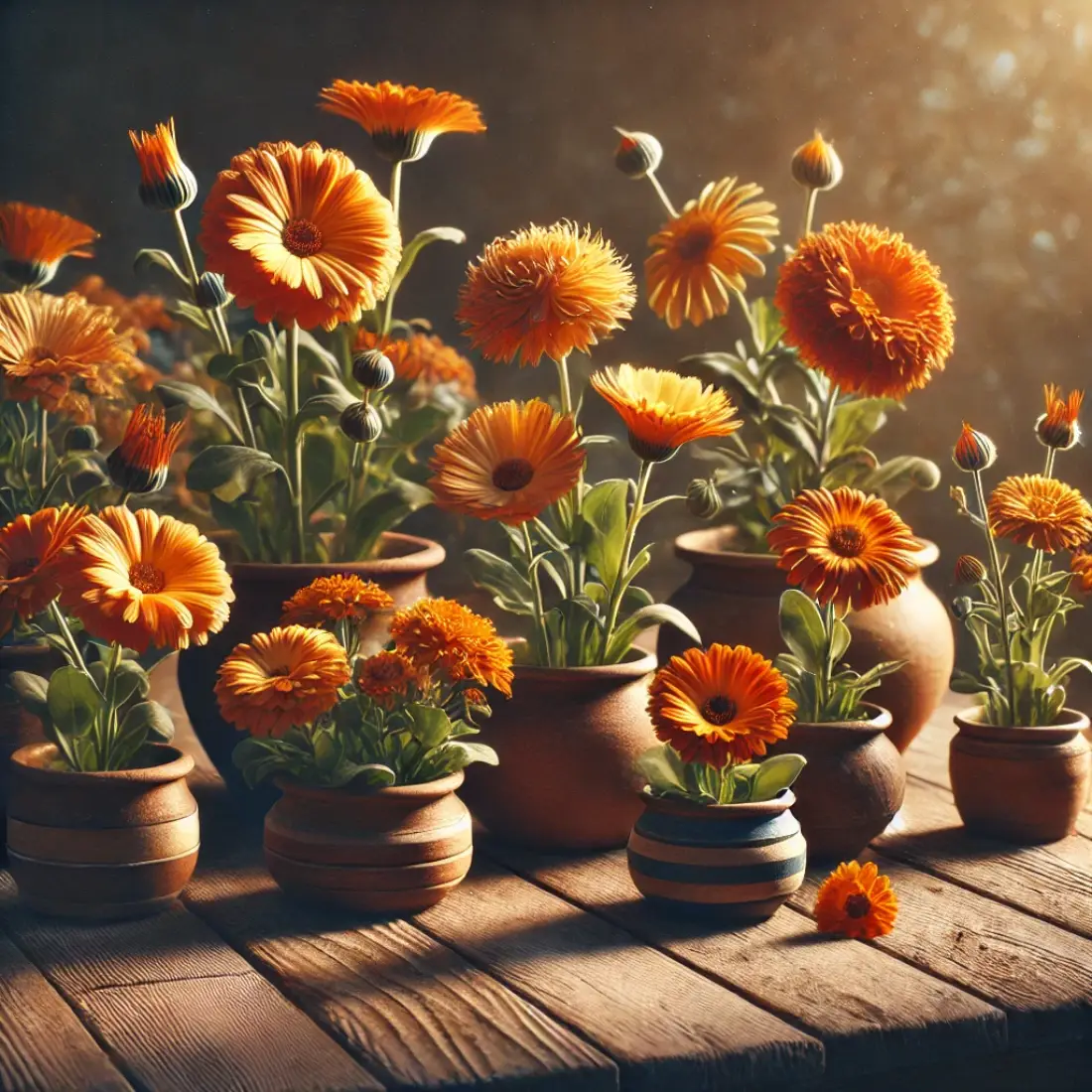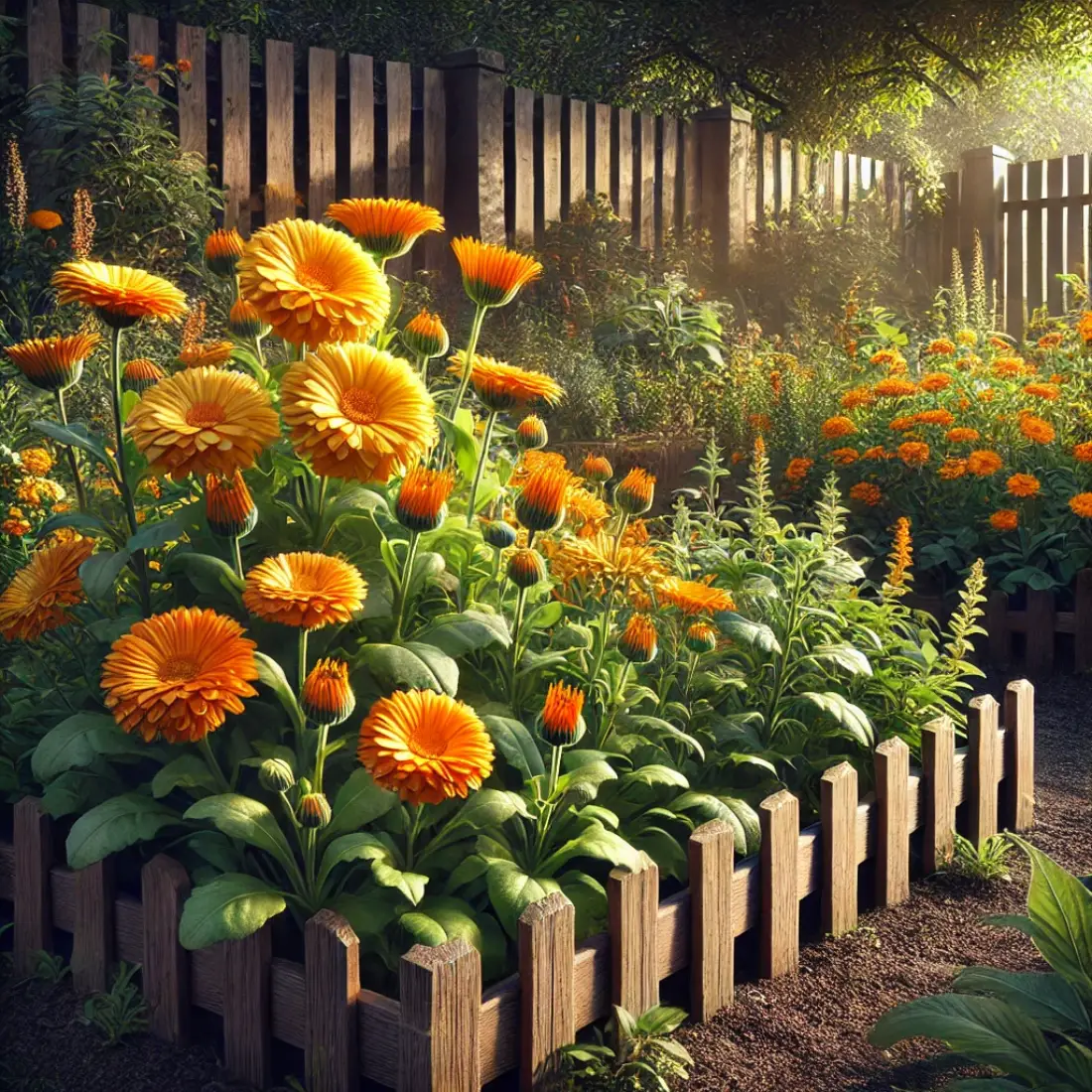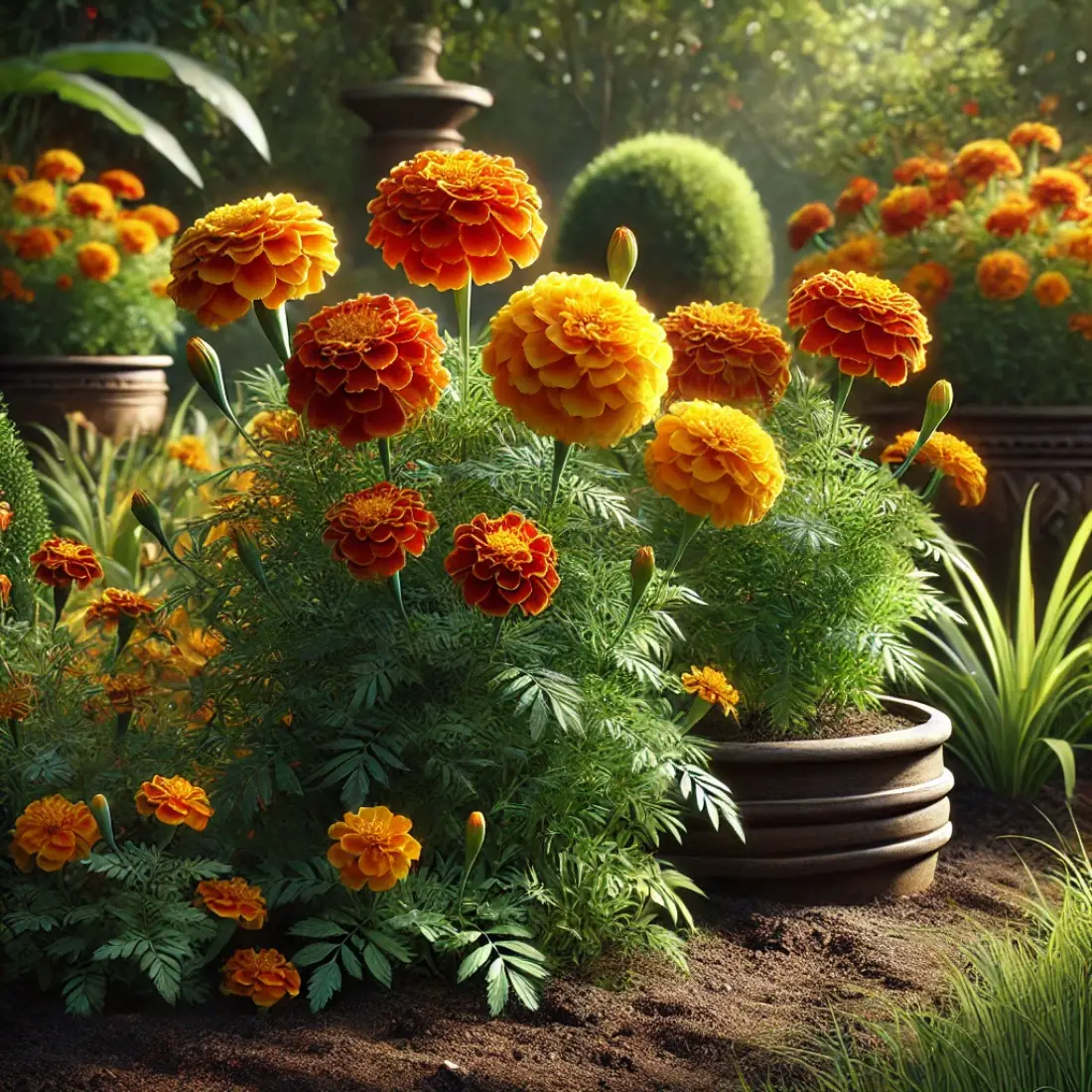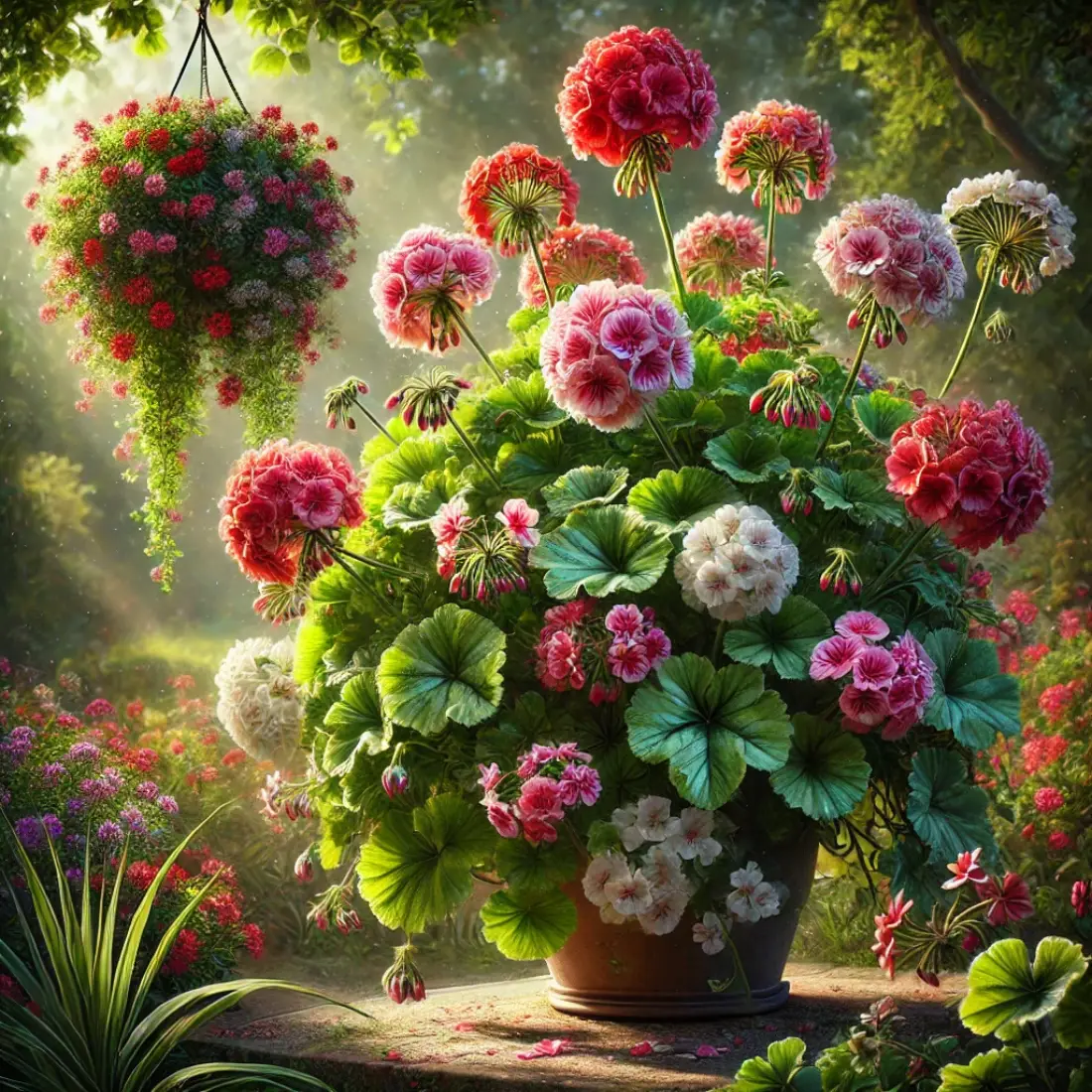Growing Calendula in your garden not only adds a burst of vibrant color but also brings a host of benefits. Known for its striking orange and yellow flowers, Calendula is a versatile plant that’s as easy to cultivate as it is rewarding. Whether you’re aiming to enhance your garden’s beauty or harness its medicinal properties, learning how to grow Calendula will enrich your gardening experience.
- Calendula is an easy-to-grow annual that thrives in a variety of conditions, making it perfect for both novice and experienced gardeners.
- It prefers full sun and well-draining soil, though it can tolerate partial shade and different soil types.
- Calendula is best planted in spring or fall, either by direct seeding outdoors or starting indoors and transplanting.
- Regular deadheading encourages continuous blooming, while proper watering and occasional fertilizing keep the plant healthy.
- Calendula flowers can be harvested and used in culinary dishes, natural remedies, and skincare products.
- Common growing issues, such as poor blooming or leggy growth, can often be resolved by adjusting light exposure or soil nutrients.
Calendula Varieties
Calendula officinalis, commonly known as Pot Marigold, is the most popular variety grown in gardens. This species is celebrated for its bright orange and yellow blooms that can reach up to 4 inches in diameter. Within this species, several cultivars offer different shades and flower forms.
- ‘Pacific Beauty’: A favorite for its large, vibrant flowers ranging from deep orange to pale yellow, perfect for garden borders.
- ‘Radio’: Known for its unique, quilled petals and striking orange color, adding texture to garden beds.
- ‘Indian Prince’: Offers deep orange-red flowers with darker centers, making it a striking choice for a bold display.

These varieties are all easy to grow and thrive under similar conditions, making them versatile options for gardeners looking to add both color and functionality to their space.
Optimal Growing Conditions for Calendula
Sunlight Requirements
- Calendula thrives best in full sun, which ensures robust flowering and healthy growth.
- It can tolerate partial shade, but this may result in fewer blooms.
- Aim for at least 6 hours of direct sunlight daily for optimal performance.
Soil Preferences
- Well-draining soil is crucial to prevent root rot and other water-related issues.
- Calendula prefers slightly acidic to neutral soil with a pH range of 6.0 to 7.0.
- Loamy soil enriched with organic matter like compost provides ideal growing conditions.
- If your soil is heavy clay or too sandy, consider amending it with compost or other organic materials to improve drainage and fertility.
Watering Needs
- Calendula needs moderate watering, with soil kept consistently moist but not waterlogged.
- During the growing season, water the plant once or twice a week depending on the climate and soil conditions.
- Ensure the top 1-2 inches of soil dry out between waterings to avoid overwatering.
Temperature and Climate
- Calendula is relatively hardy and can grow in a range of temperatures, ideally between 60°F to 70°F (15°C to 21°C).
- It can tolerate light frost, making it suitable for early spring and fall planting.
- In hot climates, providing some afternoon shade can help prevent the plant from wilting or experiencing heat stress.
Step-by-Step Guide to Planting Calendula
When to Plant
- Calendula is best planted in early spring, after the last frost, or in the fall in milder climates.
- For spring planting, start seeds indoors 6-8 weeks before the last frost, or directly sow seeds outdoors after the danger of frost has passed.
Planting Calendula from Seeds
- Direct Sowing: Choose a sunny spot with well-draining soil. Sow seeds ¼ inch deep and about 6-12 inches apart. Lightly cover them with soil and water gently.
- Indoor Sowing: Start seeds in pots filled with seed-starting mix. Place seeds ¼ inch deep, then cover with a thin layer of soil. Keep the soil moist and place the pots in a warm, sunny spot.
Germination and Transplanting
- Seeds will typically germinate in 7-14 days. Once seedlings have developed a few sets of true leaves, they are ready to be transplanted outdoors.
- Hardening Off: Before transplanting, acclimate seedlings to outdoor conditions by gradually exposing them to direct sunlight and cooler temperatures over a week.
Spacing and Depth
- When transplanting or thinning seedlings, ensure they are spaced 6-12 inches apart to allow for adequate air circulation and growth.
- Plant seedlings at the same depth as they were in their pots to prevent shock.
Watering After Planting
- Water the newly planted Calendula gently to settle the soil around the roots. Keep the soil consistently moist until plants are well established.
Caring for Calendula Plants
Fertilizing Calendula
- Calendula isn’t a heavy feeder but benefits from a light application of balanced organic fertilizer or compost every 4-6 weeks.
- Avoid over-fertilizing, as this can lead to lush foliage at the expense of flowers.
Deadheading and Pruning
- Regularly deadhead spent flowers to encourage continuous blooming throughout the growing season. This simple task also helps the plant direct energy toward producing more flowers.
- Lightly prune the plant if it becomes too leggy or untidy, promoting bushier growth and more blooms.
Pest and Disease Management
- Calendula is relatively pest-resistant, but keep an eye out for aphids and slugs. Handpick or use organic insecticidal soap if necessary.
- To prevent fungal issues, ensure good air circulation by not overcrowding plants and watering at the base.
Harvesting and Using Calendula
When to Harvest Calendula Flowers
- The best time to harvest Calendula flowers is in the morning, after the dew has dried but before the sun becomes too intense. This helps preserve the flowers’ potency and fragrance.
- Harvest flowers when they are fully open, as this is when they contain the highest concentration of beneficial compounds.
How to Harvest
- Snip the flower heads just above the first set of leaves using sharp scissors or garden shears. Regular harvesting encourages more blooms throughout the growing season.
- Handle the flowers gently to avoid bruising the petals.
Drying and Storing Calendula
- To dry Calendula, spread the flowers out in a single layer on a drying rack in a well-ventilated, shaded area. Avoid direct sunlight, as it can degrade the flowers’ color and potency.
- Once fully dry, store the flowers in an airtight container in a cool, dark place for up to a year.
Using Calendula
- Calendula petals can be used in a variety of ways, from adding a splash of color to salads and soups to making herbal teas.
- The flowers are also popular in DIY skincare, such as Calendula oil, salves, and creams, known for their soothing and healing properties.
- Once fully dry, store the flowers in an airtight container in a cool, dark place for up to a year.
FAQs on Growing Calendula
How long does it take for Calendula to grow from seed?
Calendula seeds typically germinate within 7-14 days, and the plants will start blooming about 6-8 weeks after sowing.
Can Calendula be grown in containers?
Yes, Calendula grows well in containers. Ensure the pot has good drainage, and use a well-draining potting mix. Place the container in a sunny spot.
Is Calendula a perennial or an annual?
Calendula is generally grown as an annual in most climates, although in mild winter regions, it may behave as a short-lived perennial.
Does Calendula attract pollinators?
Yes, Calendula is known to attract beneficial pollinators like bees and butterflies to your garden, making it a great companion plant.
What are the common pests that affect Calendula?
Aphids, slugs, and whiteflies are common pests that may affect Calendula. Regular monitoring and organic treatments can help manage these pests.
Can I use Calendula flowers fresh, or do they need to be dried?
Calendula flowers can be used both fresh and dried, depending on the application. Fresh petals are great for culinary use, while dried flowers are ideal for teas and skincare products.
How do I keep Calendula blooming all season?
Regular deadheading of spent flowers and providing consistent moisture and sunlight will encourage Calendula to bloom continuously throughout the season.
What is the best way to prevent disease in Calendula plants?
Ensure good air circulation by spacing plants appropriately, water at the base to avoid wetting the leaves, and remove any diseased foliage promptly.
Can Calendula tolerate frost?
Calendula can tolerate light frosts but will not survive a hard freeze. In frost-prone areas, consider planting after the last frost in spring or protecting the plants in the fall.
How do I use Calendula in skincare?
Calendula is commonly infused into oils to create soothing balms and salves. It’s known for its anti-inflammatory and healing properties, making it excellent for treating minor cuts, burns, and skin irritations.











